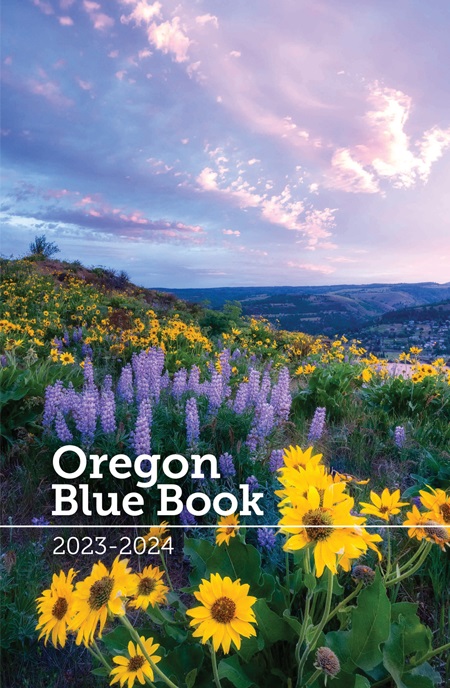The latest news stories of interest in the Rogue Valley and the state of Oregon from the digital home of Southern Oregon, Wynne Broadcasting’s RogueValleyMagazine.com
Monday, February 26, 2024
Rogue Valley Weather

...WINTER STORM WARNING REMAINS IN EFFECT UNTIL 1 AM PST TUESDAY ABOVE 2500 FEET... * WHAT...Heavy snow expected above 2500 feet. Total snow accumulations of 3 to 8 inches. * WHERE...Jackson County. This includes the Highway 227 between Tiller and Trail, Prospect, Butte Falls, and Dead Indian Memorial Highway. * WHEN...From 4 AM Monday to 1 AM PST Tuesday. * IMPACTS...Travel could be very difficult to impossible. The hazardous conditions could impact the morning or evening commute. * ADDITIONAL DETAILS...Precipitation will begin as rain late tonight then transition to snow later this morning. Our recent warm temperatures will likely delay the onset of snow accumulation on road surfaces. * View the hazard area in detail at https://www.wrh.noaa.gov/map/?wfo=mfr
Southern Oregon Homeowners Face Soaring Premiums And Few Property Insurance Options Over Wildfires

Homeowners in central, southern and eastern Oregon who have faced higher annual premiums or had their policies canceled when they came up for renewal, with some insurers no longer writing new policies. That change came after the 2020 Labor Day Fires destroyed more than 4,000 homes, becoming the state’s most expensive natural disaster in history, according to state and federal emergency response agencies.
Since then, insurance markets in parts of Oregon have begun to look more like those in California, where some of the largest insurance companies in the country are no longer renewing or writing new policies, and where the number of people turning to a state-backed insurer of last resort has doubled in recent years.
“If you want to know what the next five years look like in Oregon, look at southern California,” said Perry Rhodes, who has sold property insurance policies for Farmers in Bend for the last two decades. “If you want to know what this looks like if things get even worse, look back east to Florida,” he added. Farmers announced last year it would limit new property insurance policies in California and no longer sell any new property policies in Florida.
Rhodes said it used to be extremely rare to find a customer whose property was at such a high risk that he had to refer them to other companies. Now, he said, he sends about half of potential customers to other insurers because Farmers won’t cover them.
“The only homes that we know for sure are going to be eligible are the ones that are, so to speak, right in the middle of town, and right next to the fire department,” he said.
Oregon’s insurance commissioner, Andrew Stolfi, told the Capital Chronicle the exodus of companies offering coverage in parts of Oregon is not as severe as in California, which has been driven by high payouts for recent wildfire losses and state consumer protection laws that previously capped annual insurance premium hikes.
In Oregon, premiums are up an average of nearly 30% since 2020, according to the state’s Department of Consumer and Business Services. It reflects nationwide increases, according to several insurance marketplace reports. But in Bend, Ashland, Medford and Hood River, agents said premiums for most people have doubled or quadrupled due to the wildfire risk, and policies under $1,000 per year have become extremely rare.
Agents said policies on some homes near Ashland have risen as much as 600% in the last four years. (READ MORE)
U.S. Sen. Ron Wyden is urging the National Park Service to keep Crater Lake operations running as the federal agency weighs whether to dissolve a contract with the company that manages lodging, dining, retail and boat tours in the park.

Wyden’s letter comes one week after news that the National Park Service has threatened to terminate a contract with Philadelphia-based Aramark, which has operated in the Oregon park since 2018. Aramark, under its subsidiary Crater Lake Hospitality, is currently under contract through 2030.
On Thursday, Senator Wyden followed up with a letter to National Park Service Director Charles “Chuck” Sams III after NPS announced its intent to terminate the contract with Aramark due to an inability to live up to its contractual obligations.
In his letter, Senator Wyden states: “It is clear the National Park Service has acted with urgency and decisiveness to date in responding to my concerns by issuing a notice of intent to terminate the existing contract to the concessionaire responsible for these issues. As you move forward with this process, I ask that you take every available step to minimize impacts on visitors and park resources during the transition to a new concessionaire.
“As spring approaches and the winter conditions moderate, visitors will begin returning to the park in large numbers to enjoy a wide range of activities. It is important that these visitors are able to find places to rest, get a bite to eat and learn about the history of this incredible place while planning their hikes, boat tours, and scenic rides around the caldera’s spectacular rim. These services must be maintained as they are essential to park safety and attracting the visitors from all over the world that support small businesses in the surrounding gateway communities.”

.BODYCAM VIDEO: Sheriff’s Deputies Rescue Infant and Toddler Abandoned in Woods by Suspect On-the-Run; Grand Jury Indicts Today on All Charges
BODYCAM Available for Download Here: https://vimeo.com/915796109?share=copy
JCSO Case 24-0935 —- MEDFORD, Ore. – A Jackson County Grand Jury indicted a man today wanted on charges stemming from multiple incidents involving domestic violence and child endangerment. The suspect, Justin Ryan Trompeter, 24, of Trail is wanted for two counts of second-degree child neglect, felony fourth-degree domestic violence assault, third-degree robbery, first-degree theft, harassment, and two counts of reckless endangerment.
The suspect remains on-the-run with Jackson County Sheriff’s Office (JCSO) deputies continuing their investigation. If you know of the suspect’s whereabouts, call ECSO Dispatch at (541) 776-7206. Trompeter is known to frequent Jacksonville, Shady Cove, Eagle Point, and Trail.
JCSO deputies were originally searching for Trompeter in connection with a February 7 domestic violence assault call where he fled the scene at a high rate of speed with the children. On Friday, February 16, JCSO deputies received information that Trompeter was hiding with the children, ages 6 months and 1.5 years, deep in the surrounding Jacksonville woods.
Deputies quickly located a vehicle at the top of Wagon Trail Drive around 1:30 p.m on Friday, February 16. JCSO deputies approached the car with caution, but Trompeter had fled the scene before deputies’ arrival. Deputies found the two young children abandoned and alone in the car. Deputies believe the children may have been left alone in the vehicle for up to two hours. Further investigations revealed suspected fentanyl and meth in the car with the children.
Mercy Flights medics checked the children on scene then turned them over to Department of Human Services (DHS) personnel. After the incident, the children were treated at a local hospital and remain in DHS care. This case is open and ongoing with deputies following additional leads. If you know of the suspect’s whereabouts, call ECSO Dispatch at (541) 776-7206.

Hearts with a Mission, a program to help local seniors who need assistance, is seeking volunteers.
The volunteer-based program — which started in January 2023 — has 90 volunteers ready to help, but more than 100 seniors who need assistance.
Stephanie Miller, the Hearts For Seniors Program Manager, said that it’s a heartwarming job and fulfilling volunteer work. Residents can apply here.
David Grubbs’ Murder Investigation Remains Active

The Ashland Police Department’s investigation into the murder of David Grubbs on November 19, 2011 remains open and active. Recently two new detectives have been assigned to look into new leads that have come in.
This case remains important to David’s family, the community, and the Ashland Police Department. As detectives continue to pursue these new leads, anyone with additional information is encouraged to reach out to the Ashland Police Department at 541-488-2211.
The reward for information leading to an arrest on this case remains at over $21,000.
Fauna Frey, 45, disappeared in Oregon on a road trip, June 29, 2020, following her brother’s death —
https://original.newsbreak.com/@ada-e-1668135/3304227455096-fauna-frey-45-disappeared-in-oregon-on-a-road-trip-june-29-2020-following-her-brother-s-death
PART 2 – Newsweek Podcast Focusing on The Disappearance of Fauna Frey From Lane County

Here One Minute, Gone the Next —– PART 2 – Josephine County Sheriff Dave Daniel joins investigative journalist Alex Rogue to speak with Here One Minute, Gone the Next about the disappearance of Fauna Frey, the growing friction between citizen investigators and law enforcement, and the lack of resources in missing persons cases. https://podcasts.apple.com/us/podcast/the-disappearance-of-fauna-frey-pt2-feat-sheriff/id1707094441?i=1000630100040
PART 1 – John Frey joins Newsweek to discuss exclusive details about the case of his missing daughter that until now have been unavailable to the general public.
If you have any information on the whereabouts of Fauna Frey, call the anonymous tip line at 541-539-5638 or email FindFaunaFrey@gmail.com.
Help Find Fauna Frey #FindFaunaFrey FACEBOOK GROUP

Nearly 300,000 Oregon Kids Await Approval Of Summer Food Benefits
A program that would provide food benefits to kids during the summer still needs funding approval from the Oregon Legislature.

The state has already approved the Summer EBT program, but needs to agree to pay for half the administrative costs in order to get access to federal funds.
It would help the families of nearly 300,000 kids receive about $40 for food each month over the summer.
Charlie Krouse, a community organizer with Partners for a Hunger-Free Oregon, said child hunger spikes during the summer months.
“When they’re fed throughout the school year and they have access to meals throughout the school year, it’s only fair that they have access to food throughout the summer,” said Krouse. “Their income level doesn’t drastically change in the summer – they still need access to support, and access to food.”
Krouse said there have been bipartisan calls to fund the program. The state would get access to about $35 million a year from the federal government for benefits.
The legislative session is scheduled to adjourn on March 10.
Matt Newell-Ching, senior policy manager with Oregon Food Bank, said Summer EBT benefits would be especially helpful for families in rural areas.
“While we love and are big proponents of summer meal sites, we also know that a lot of them are inaccessible,” said Newell-Ching. “And so, this new program was meant specifically to address gaps like that.”
Newell-Ching said everything else is in place – they just need the final piece from lawmakers.
“Ensuring that Oregon contributes its share of the administrative funding makes this all happen and builds on that groundwork,” said Newell-Ching. “And so, basically we’re asking legislators to do the right thing for 294,000 kids, make sure that that funding is there, so we can get this across the finish line and kids can get the support during the summer.” (SOURCE)
A severe lack of affordable housing has prompted Oregon lawmakers to consider chipping away at a 1970s law that made the state a national leader in leveraging land use policy to prevent suburban sprawl and conserve nature and agriculture.
The so-called urban growth boundary, a sacred cow of Oregon’s liberal politics, helped to cement the state’s green reputation and has been “extremely influential” in its development, said Megan Horst, an urban planning professor at Portland State University.
“I can’t overstate it,” she said of the half-century-old law. “All that farmland would likely be a sea of strip malls and subdivisions, as they are pretty much anywhere else in the country.”
But interconnected homelessness and housing crises have forced exceptions to be considered by lawmakers, including Democrats who have historically defended the landmark policy.
The sole bill introduced by Democratic Gov. Tina Kotek during this year’s short legislative session is a sweeping housing package aiming to jumpstart home construction by tweaking the 1973 law, which essentially drew a circle around cities to protect farmland, forests and nature from urban encroachment.
Lawmakers have just two weeks to approve the bill before the session ends March 10.
As the longest serving speaker of the Oregon House, from 2013 to 2022, Kotek became known for her progressive agenda. But as governor, she has sought to ease restrictions for developers in a bid to advance her housing production goals.
Working to win support for the package has put her in the unusual position of having to lobby not Republicans — who largely back it — but members of her own party, many of whom voted against a similar measure last year. Kotek said she spent the seven months between legislative sessions speaking with lawmakers, housing developers and conservation groups to find a middle ground.
“We had some proposals last year that didn’t work for everyone, but we didn’t walk away. We sat down and worked on it,” she said while testifying in support of the bill, describing herself as its “chief architect” and “chief cheerleader.”
“I also know that the process means there might be amendments,” she added. “But what we can’t see happen is that this Legislature leaves at the end of their session without this bill.”
On the ground, the anti-sprawl policy can look dramatic. At times, blocks of dense apartment complexes abruptly end and give way to thick forest or rolling fields. One side of a road can be lined with homes, while the other side features open space as far as the eye can see.
The 42-page package would, among many other things, grant a one-time exemption to the decades-old rule by allowing cities to acquire new land for the purpose of building housing. It would require 30% of new units in expansion areas to be affordable.
Currently, cities must forecast population growth over 20 years before requesting to change an urban growth boundary for new homes, businesses or industrial or public facilities. If they show the area inside their boundary won’t accommodate projected needs, and identify outside land meeting a complex set of criteria, they can apply to expand.
Cities of more than 2,500 residents seeking to add more than 50 acres (20 hectares) must submit an application to a state agency for approval.
Ninety-five percent of such adjustments were approved between 2016 and 2023, according to the Department of Land Conservation & Development, the agency tasked with approvals. But many cities and developers say the rigorous evaluation and analysis requirements can be long and difficult to navigate.
“While land supply is not a barrier for all cities, it is critical for some, and the current … process is time-consuming, cost-prohibitive, and litigious,” Ariel Nelson, a lobbyist for the League of Oregon Cities, which has a neutral stance on the bill, said in written testimony.
To speed up the process, the bill before lawmakers would ease certain regulations and waive the 20-year population forecast if conditions are met. But the proposal still includes a number of restrictions largely stemming from Democrats’ requests.
In order to be eligible, cities must prove they lack land as well as affordable housing. They would need to outline the history of their growth boundary in the previous 20 years and assess how much land inside the current boundary has been developed. They would also have to show that a certain percentage of households are severely cost burdened, meaning they spend more than half of their income on housing.
In most cases, cities wouldn’t be able to add high-value farm or forest land.
Additionally, cities would only be able to add relatively small areas of land: cities with populations less than 25,000, for example, could only add a maximum of 50 “net residential” acres (20 hectares), which is less than one-tenth of a square mile (0.3 square kilometers). A net residential acre refers to the amount of land used to build homes, excluding streets and utilities.
The one-time exemption to urban growth boundary rules would expire in 2033.
State Sen. Deb Patterson, a member of the Environmental Caucus and the Senate’s housing committee, said these guardrails made her feel comfortable supporting the bill. She was one of the Democratic lawmakers whose “no” vote killed last year’s proposal.
“While it’s not in any way shape or form a perfect bill, so much work has been done to make this a much better bill that I do believe I will be a ‘yes’ vote,” she said.
One of her Republican colleagues on the Senate’s housing committee, Sen. Dick Anderson, also supports the bill but said the boundary expansion rules were restrictive “almost to the point of not being of use.”
“You should not be envisioning a Las Vegas or Phoenix style expansion, with houses galore and subdivision after subdivision,” he said.
Anderson thinks other parts of the bill would be more useful in his coastal district, specifically a measure allowing cities to “swap” land currently within their boundaries, which is harder to be develop because of steep terrain or other topographical issues, with an equivalent amount of land just outside that is more suitable for residential use.
Other factors also have to be addressed in order to fully tackle the crisis, such as rising construction supply costs, a labor shortage and increasing corporate ownership of housing, housing experts say.
Lawmakers have tackled the land use law in the past, including to spur industrial growth. Most recently, they approved a measure last year allowing the governor to designate up to eight sites for expansion to make room for semiconductor factories. (SOURCE)
Oregon State Parks recruiting about 250 seasonal park rangers and assistants for 2024

SALEM, Oregon— Oregon State Parks is not just a beautiful place to visit – it’s also a spectacular place to work.
Oregon Parks and Recreation Department is recruiting 250 seasonal park rangers and assistants for positions across the state that range anywhere from four to nine months. The peak season is from April to September, but some of the positions start as early as March and run as late as December.
Seasonal staff help visitors access world-class experiences and ensure clean and safe park areas for everyone to enjoy. Duties include janitorial work, landscape maintenance, visitor education and visitor services.
Salaries start at $17.34 per hour for seasonal assistants and $20.06 for seasonal rangers. Both positions include comprehensive medical, vision and dental plans for employees and qualified family members. The positions also include paid sick leave, vacation, personal leave and 11 paid holidays per year. Student workers, ages 16 and older, start at $17.32 or more per hour depending on experience (no benefits).
OPRD promotes from within and several of our top leaders started as seasonal employees.
“We love what we do at Oregon Parks and Recreation Department,” said Director Lisa Sumption. “We get to preserve and share some of Oregon’s most treasured landscapes and resources. Whether you’re here for a season or your entire career, you’re part of that OPRD family.”
For more information about current openings, visit stateparks.oregon.gov. If you have any questions or need additional assistance in accessibility or alternative formats, please email Oregon Parks and Recreation Department Recruiting D.Recruiting@oprd.oregon.gov“>OPRD.Recruiting@oprd.oregon.gov.
Oregon Parks and Recreation Department is an equal opportunity, affirmative action employer, committed to diversity and pay equity.
Oregon Marijuana Sales Fall Again
Oregon’s struggling cannabis industry endured another difficult year in 2023, and there’s no indication conditions will ease in the foreseeable future.
Prices remain severely depressed, under $4 a gram for 11 consecutive months. Sales fell by nearly 4% last year. And harvests remain elevated, which means supply is likely to continue outstripping demand – making life tough for those who grow and sell recreational marijuana.
“Given these market conditions of oversupply, (retail) saturation, and stable consumer demand, low prices make it difficult for businesses to be profitable,” the Oregon Office of Economic Analysis wrote in its most recent report this month.
The market bloomed in the first years after Oregon voters legalized recreational marijuana in 2014. Sales began in 2015 and climbed for four subsequent years, with a jump that brought sales above $1 billion for the first time in 2020 as people embraced new forms of entertainment during the COVID-19 pandemic.
Sales fell sharply in 2022 and 2023, dropping by 19% as market conditions returned to more normal patterns. But since Oregon put no limits on how many businesses may grow or sell cannabis, and since marijuana grows like a weed — so to speak — in many parts of Oregon, the state quickly had a cannabis glut.
The marijuana industry has long hoped that federal legalization, or some half-step that allowed cannabis to be sold across state lines, could create a national market for Oregon’s crop. But while individual states continue to move toward legalizing marijuana, changes on the national level appear unlikely anytime soon given the intense partisan divide in Congress. (READ MORE)
Oregon Blue Book Cover Photo Contest Underway
The front cover of the 2023-2024 Oregon Blue Book showcases a hillside covered in beautiful balsam root and lupine flowers at Rowena Crest, captured by Oregon photographer Micah Lundsted of Eugene. The book’s back cover shows an image of three rockfish made at the Oregon Coast Aquarium by Dale George of Grants Pass.

Which images will cover the 2025-2026 Oregon Blue Book? The Oregon Blue Book cover photo contest kicks off today, giving amateur photographers the chance to submit their photos to answer that question. Photo contest winners will be selected in October 2024 by Secretary of State LaVonne Griffin-Valade.
“Choosing the cover photos for the Oregon Blue Book is an honor,” said Secretary Griffin-Valade. “The images are a chance to see our beautiful state through the lens of the many talented amateur photographers who live in Oregon.”
The contest is open to Oregon residents of any age who earn less than half their income from photography. Images must be Oregon related and should be submitted in the portrait, rather than landscape, orientation. Two images will be selected for the cover: one for the front and one for the back. Visit the Oregon Blue Book Photo Contest guidelines for more information: https://sos.oregon.gov/blue-book/Pages/about-conte…
Images can be submitted through the Oregon Blue Book website portal or via U.S. mail. The deadline to submit photos for consideration is October 27, 2024. Contact the Oregon Blue Book Managing Editor at Oregon.Bluebook@sos.oregon.gov with questions or for additional information.
DETAILS
What: 2025-2026 Oregon Blue Book Cover Photo Contest
Who: Amateur photographers who live in Oregon
When: February 7, 2024-October 27, 2024
Where: Submit online or through U.S. Mail
Why: Photo on the cover of the 2025-2026 Oregon Blue Book
ODFW Announces Stamp Art Competitions
The Oregon Department of Fish and Wildlife is making a call to area artists to compete in one, or all three, of ODFW’s 2025 stamp art competitions.

The winning artist in each contest receives a $2,000 award and their winning artwork is used to produce collector’s stamps and other promotional items, sales of which benefit Oregon’s fish, wildlife, and their habitats.
For more information on contest rules and to order stamps and art prints, visit: https://www.dfw.state.or.us/stamp_contest/index.asp.
Entries will be accepted beginning Aug. 30 through Sept. 27 by 5 p.m., at the Oregon Department of Fish and Wildlife headquarters, 4034 Fairview Industrial Dr., SE, Salem, OR 97302.
Entries can be mailed or hand delivered. If you hand-deliver your entry, call ahead to make arrangements at 503-947-6314.
Here’s a look at the three categories:
Habitat Conservation Stamp
Art entries must feature a “Strategy Species” identified in the Oregon Conservation Strategy in its appropriate habitat. Not all species in the strategy are eligible, so use the qualifying list of species.
See contest rules and entry form for more information and a list of eligible species at
https://www.dfw.state.or.us/conservationstrategy/habitat_conservation_stamp.asp.
Waterfowl Stamp Contest
Art entries must feature one of the following species in its natural habitat setting: Ring-necked Duck, White-winged Scoter, or Barrow’s Goldeneye.
See contest rules and entry form for more information at
https://www.dfw.state.or.us/resources/hunting/waterfowl/contest/index.asp.
Upland Game Bird Stamp Contest
Art entries must feature California Quail in its natural habitat setting.
See contest rules and entry form for more information at https://www.dfw.state.or.us/resources/hunting/upland_bird/contest/index.asp
Artists should not the highlighted new for 2025 information in the contest rules and the final page for packaging tips.
A panel will judge artwork based on artistic composition, anatomical accuracy of the species and general appeal.
Collector’s stamps, art prints and other promotional materials are produced from first-place artwork. Proceeds from product sales are used for habitat improvement, research surveys and conservation projects.
Interested artists are encouraged to visit ODFW’s stamp art competition website for more information on the contests and to view entries from previous years. https://www.dfw.state.or.us/stamp_contest/index.asp

https://www.facebook.com/groups/1109674113319848



